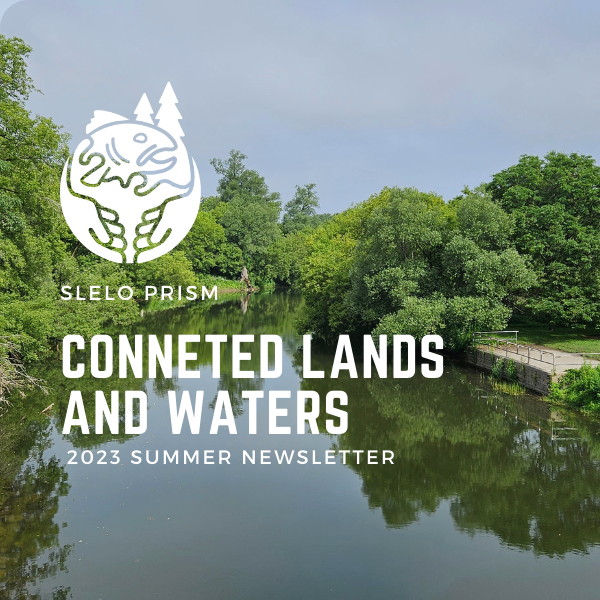This article was featured in the 2023 summer newsletter by Rob Williams, SLELO PRISM Director.
Climate change is expected to alter species distributions, modify ecological processes, and exacerbate environmental degradation (Pachauri & Reisinger 2007).
. To offset these effects, the need is greater than ever for strategic invasive species management and restoration. One way in which to achieve this may be to focus on connected land and waterscapes.
As our climate changes, native plants and animals shift their distributions by colonizing and establishing in new territory, finding suitable conditions including microclimates (riparian areas) that allow them to persist, and produce offspring to continue the process. The problem is that this takes time – generations, perhaps eons and the process is further complicated by landscape fragmentation such as roads, dams, and other human development (Anderson et al 2016). Furthermore, invasive species reduce the overall health and function of natural ecosystems that may further hinder the natural shifts of native flora and fauna, as well as the ability of forests to sequester and store carbon. By reducing the invasives found along connected systems and by reestablishing native plant assemblages we can begin to recover ecosystem resilience and biodiversity on these types of green watershed infrastructures.
SLELO PRISM is taking this concept of focused management and restoration into consideration. One of our recent projects at South Sandy Creek has been referenced as a “small scale project with large scale outcomes” (Rogers 2023).
This project achieved 3.5 acres of improved riparian management impacting a 30-acre Priority Conservation Area (PCA). This holds true for our terrestrial sites as well. At our Black Pond PCA 0.5-acres of improved management serves to protect a 526-acre PCA.
By focusing invasive species suppression and habitat rehabilitation on connected areas, both terrestrial and aquatic areas, we can defragment our recovery efforts, preserve the resilience of these systems and augment their natural character to achieve a greater conservation impact.



